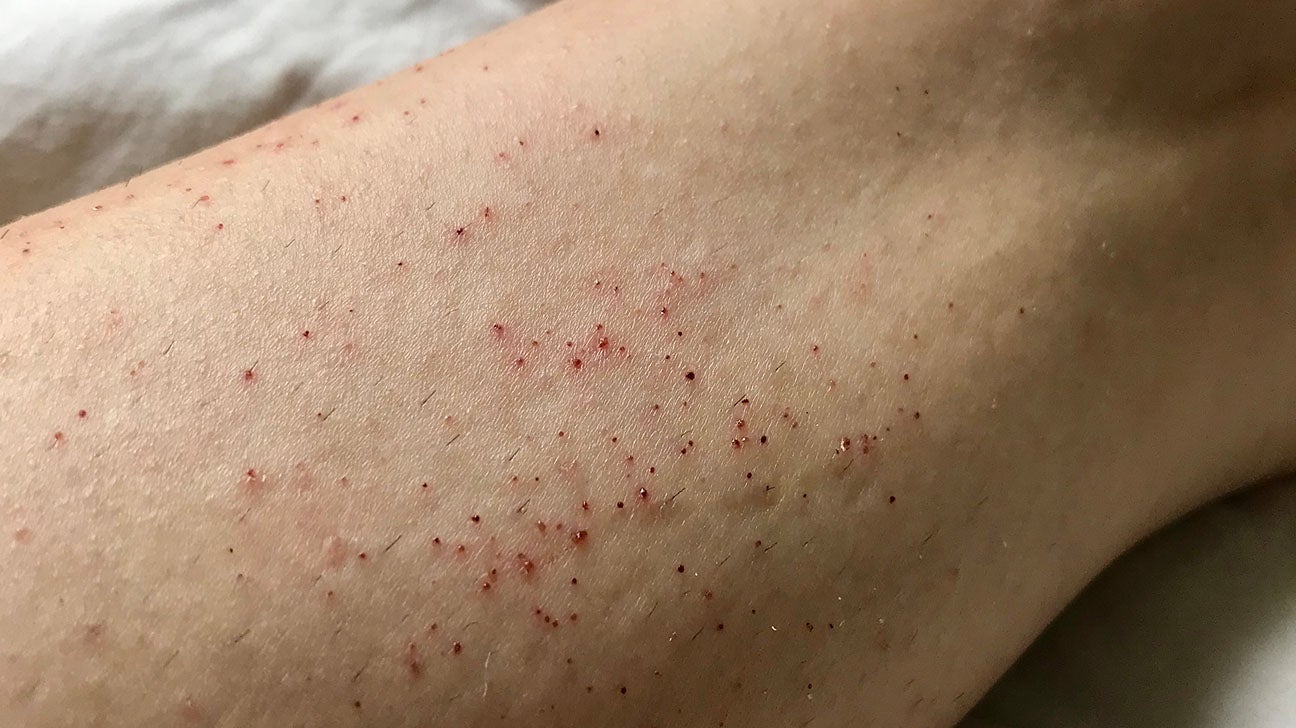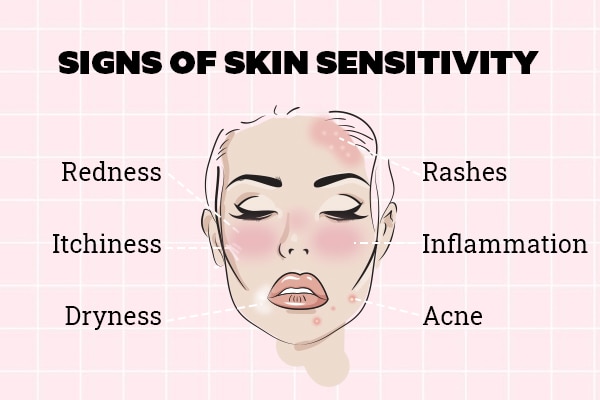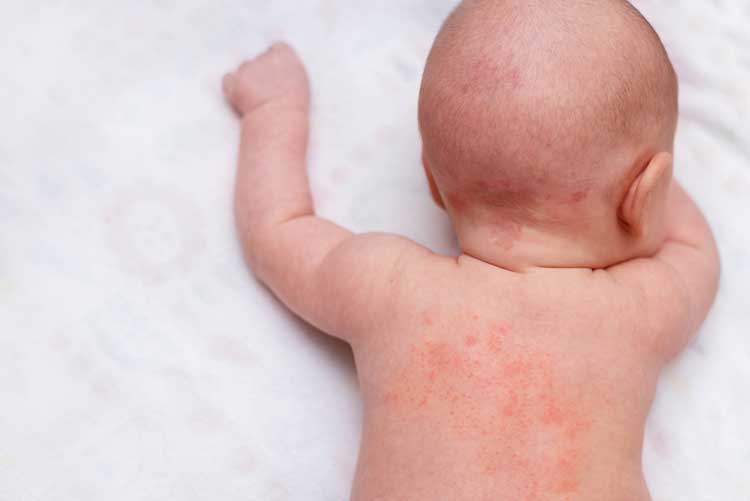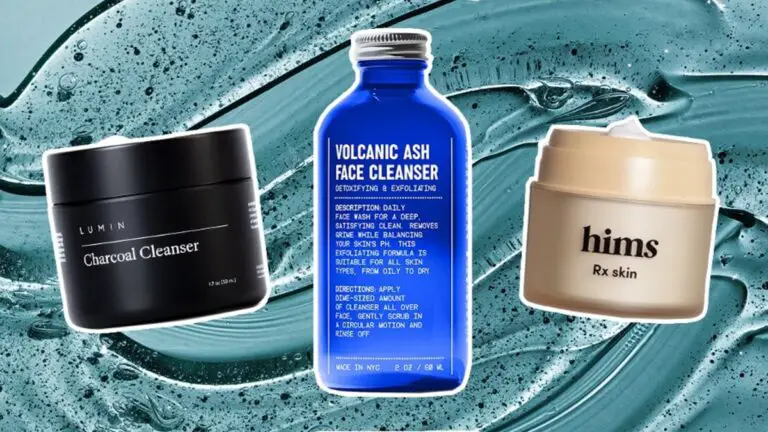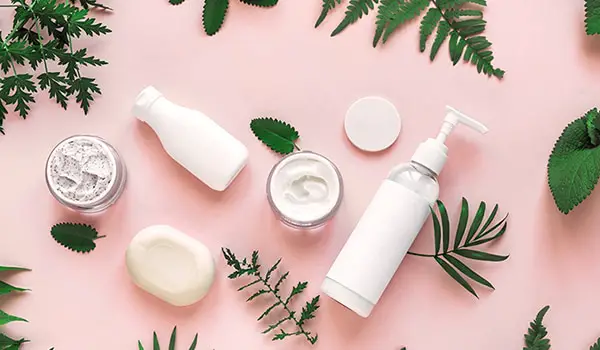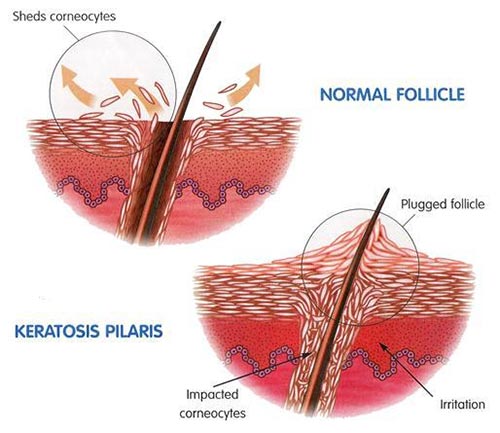How to Get Rid of Razor Burn
Introduction
Razor burn is a common skin irritation that many people experience after shaving. It can leave your skin red, itchy, and uncomfortable. Whether you’re new to shaving or have been doing it for years, razor burn can be a pesky issue. However, the good news is that there are effective ways to prevent and treat it.
In this guide, we will explore what razor burn is, why it occurs, and most importantly, how to get rid of it. Whether you shave your face, legs, or any other part of your body, these tips and remedies will help you achieve smooth, irritation-free skin. Say goodbye to the discomfort of razor burn and hello to a more enjoyable shaving experience.
Before we dive into prevention and treatment methods, let’s first understand what razor burn is and why it happens in the first place.
Understanding Razor Burn
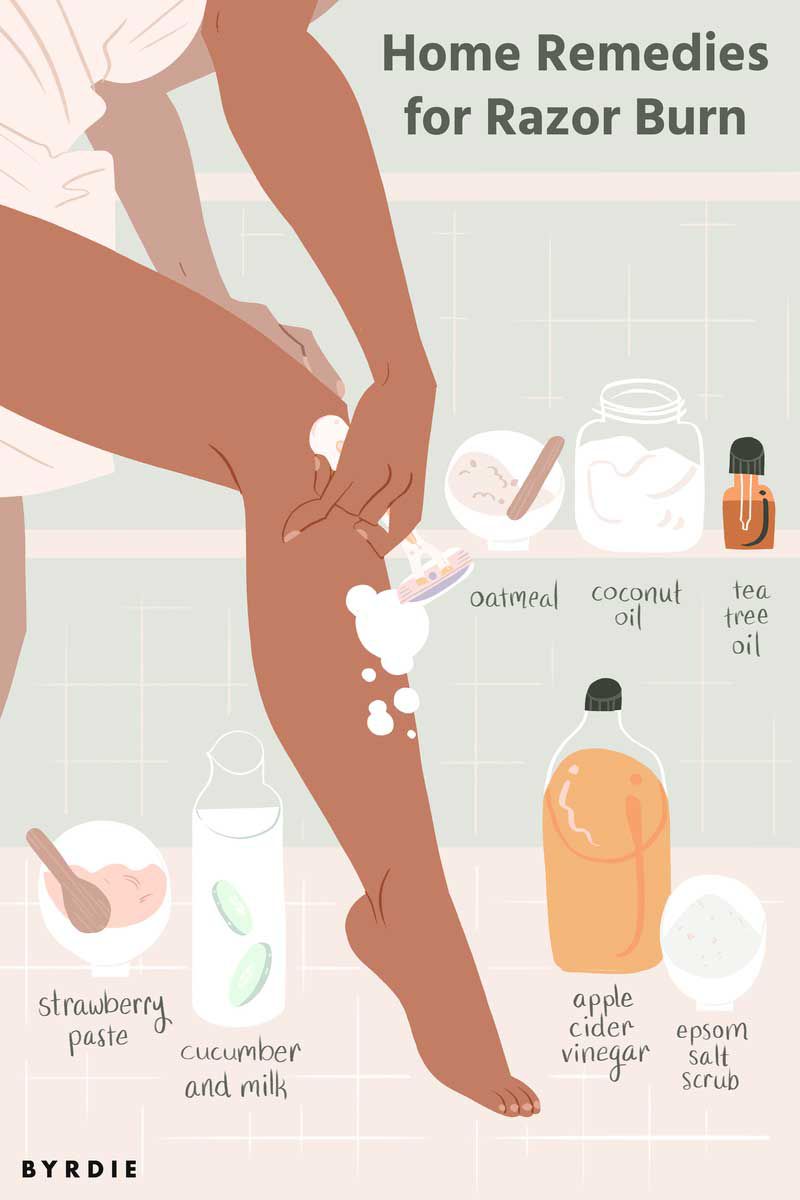
Razor burn, also known as razor rash or shaving rash, is a common skin condition that occurs after shaving. It’s characterized by redness, irritation, and sometimes small, itchy bumps on the shaved area. Understanding the causes and symptoms of razor burn is crucial to effectively preventing and treating it.
Causes of Razor Burn
Razor burn is primarily caused by friction and irritation from the shaving process. Here are some common factors that contribute to razor burn:
- Blunt Razors: Using a dull or old razor blade can tug at the hairs rather than cutting them cleanly, leading to irritation.
- Shaving Against the Grain: Shaving in the opposite direction of hair growth increases the risk of razor burn.
- Pressing Too Hard: Applying excessive pressure while shaving can irritate the skin and cause razor burn.
- Skipping Pre-Shave Prep: Not preparing your skin properly before shaving, such as not using warm water or shaving cream, can make razor burn more likely.
- Sensitive Skin: People with sensitive skin are more prone to razor burn, as their skin can react strongly to the shaving process.
Symptoms of Razor Burn
Razor burn symptoms can vary from mild to severe and may include:
- Redness: The affected area often appears red and inflamed.
- Irritation: Razor burn can cause itching, burning, or a stinging sensation.
- Bumps: Small, raised bumps known as razor bumps or pseudofolliculitis may develop.
- Ingrown Hairs: Sometimes, hairs can grow back into the skin, causing further irritation.
Areas Prone to Razor Burn
While razor burn can occur anywhere you shave, some areas are more susceptible to it due to the sensitivity of the skin and the curvature of the body. Common areas include:
| Common Areas for Razor Burn | Reasons |
|---|---|
| Face and Neck | Facial skin is sensitive, and the contours of the face can make shaving tricky. |
| Underarms | Underarm skin is sensitive, and shaving against the grain is common. |
| Bikini Area | The bikini area has sensitive skin, and tight clothing can further irritate it. |
| Legs | Legs often have fine hairs, and improper shaving technique can lead to razor burn. |
Now that we’ve explored the causes and symptoms of razor burn, let’s move on to the essential steps you can take to prevent it.
Preventing Razor Burn
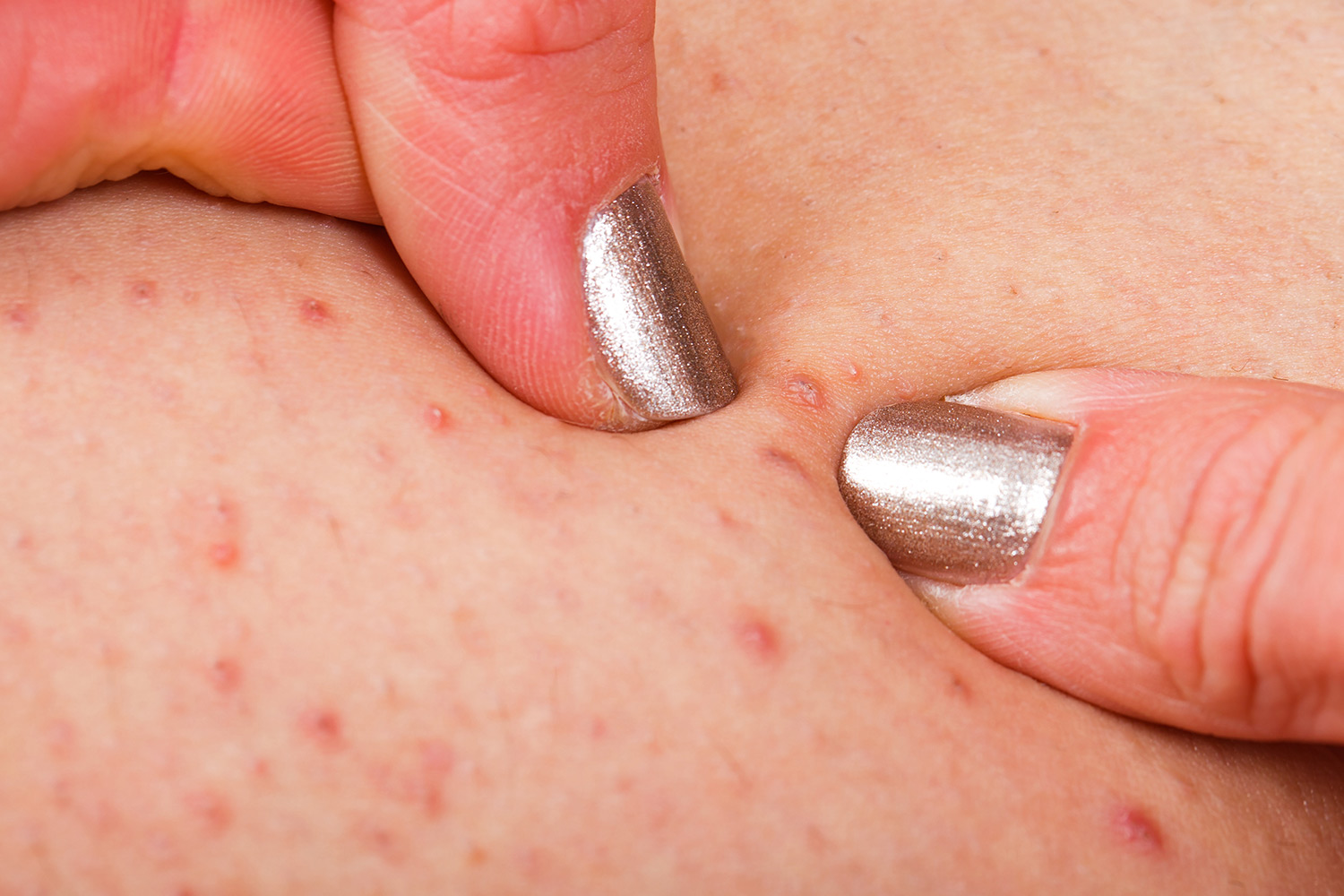
Preventing razor burn is essential for achieving a smooth and irritation-free shave. By following these steps and adopting good shaving habits, you can significantly reduce the risk of razor burn:
1. Use a Sharp Razor
One of the primary causes of razor burn is using a dull or old razor blade. Replace your razor blades regularly to ensure a clean, sharp shave. Dull blades can pull at hairs and irritate the skin.
2. Prep Your Skin
Properly preparing your skin before shaving can make a world of difference. Here’s how to do it:
- Warm Water: Before shaving, wash the area with warm water or take a warm shower. This helps soften the hair and open up the pores.
- Use Shaving Cream: Apply a good-quality shaving cream or gel. It provides lubrication and protection, reducing friction during shaving.
3. Shave in the Right Direction
Shaving against the grain of your hair growth can increase the likelihood of razor burn. Always shave in the direction of hair growth to minimize irritation.
4. Don’t Press Too Hard
Let the weight of the razor do the work. Avoid applying excessive pressure, as it can lead to skin irritation. A gentle touch is often more effective.
5. Use Short Strokes
Instead of long, sweeping strokes, use short and controlled strokes. This reduces the risk of nicks and cuts and allows for a more precise shave.
6. Rinse Your Razor
After each stroke, rinse your razor blade with warm water to remove hair and shaving cream buildup. A clean razor provides a smoother shave.
7. Post-Shave Care
After shaving, follow these steps to soothe your skin:
- Cold Water Rinse: Rinse the shaved area with cold water to close the pores and reduce inflammation.
- Apply Aftershave or Moisturizer: Use an alcohol-free aftershave or a moisturizer to hydrate and calm the skin.
8. Choose the Right Products
Invest in high-quality razors and shaving products. Cheaper alternatives may have harsh ingredients that can irritate your skin.
9. Avoid Over-Shaving
Shaving too frequently in the same area can lead to razor burn. Give your skin some time to recover between shaves.
| Preventing Razor Burn Checklist |
|---|
| Use a sharp razor. |
| Prepare your skin with warm water and shaving cream. |
| Shave in the direction of hair growth. |
| Avoid excessive pressure and use short strokes. |
| Rinse your razor frequently. |
| Follow proper post-shave care. |
| Opt for high-quality shaving products. |
| Avoid over-shaving. |
By following these preventive measures, you can significantly reduce the chances of experiencing razor burn and enjoy a smoother, more comfortable shaving experience.
Treating Razor Burn
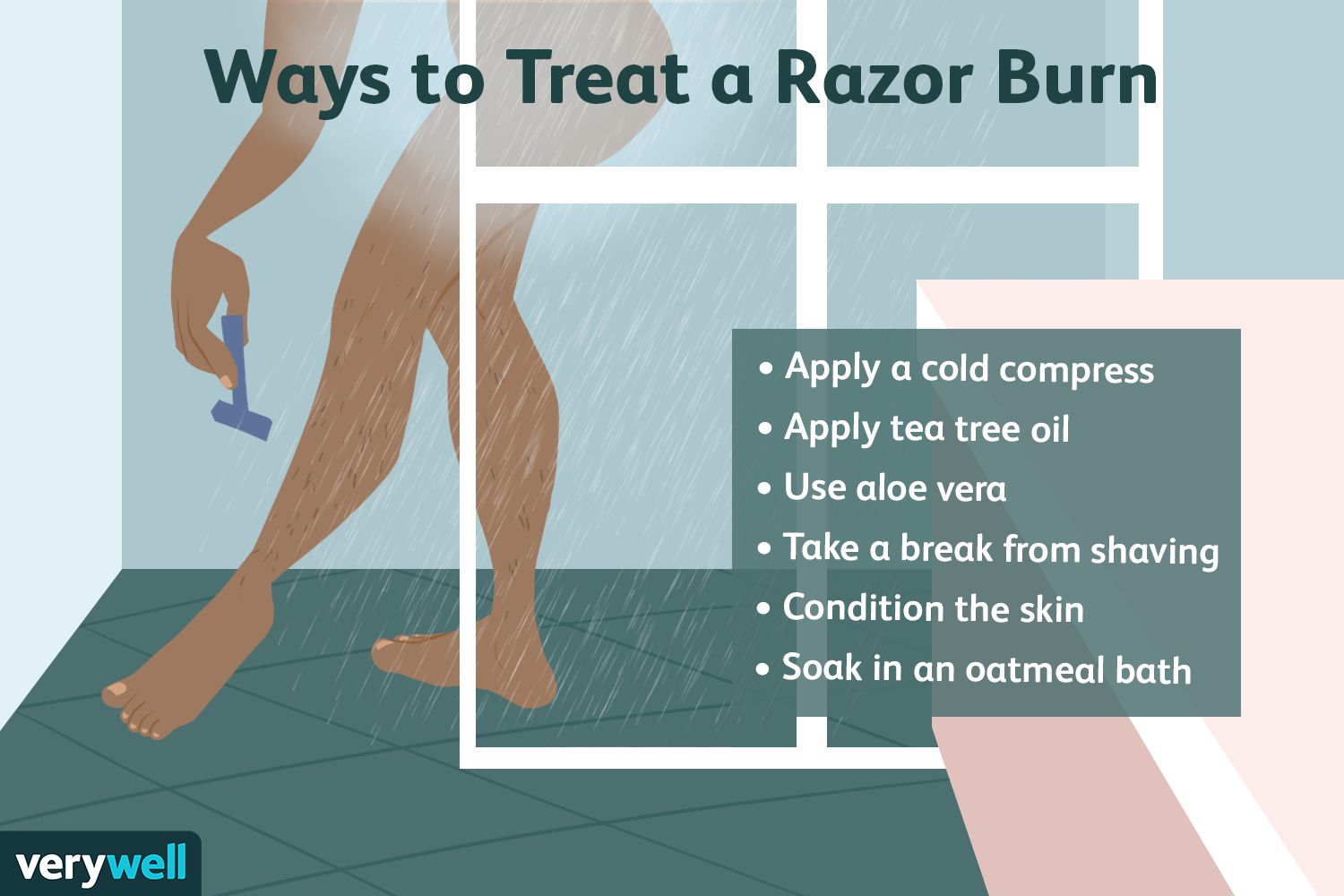
If you’ve already fallen victim to razor burn, don’t worry – there are effective ways to treat it and soothe your irritated skin. Follow these steps to alleviate the discomfort:
1. Immediate Relief
When you first notice razor burn, take these initial steps for quick relief:
- Cool Compress: Apply a cool, damp washcloth to the affected area for a few minutes. This can help reduce redness and soothe the burning sensation.
- Avoid Shaving: Give your skin a break. Refrain from shaving the irritated area until it has healed completely.
2. Moisturize
Keeping your skin hydrated is essential for the healing process. Use a gentle, alcohol-free moisturizer to prevent further irritation and promote skin repair.
3. Over-the-Counter Products
There are various over-the-counter products designed to treat razor burn. Look for options that contain ingredients like aloe vera, chamomile, or witch hazel, which have soothing properties.
4. Topical Steroids
If your razor burn is particularly severe or leads to inflammation, you may want to consult a healthcare professional. They can prescribe a topical steroid cream to reduce swelling and redness.
5. Avoid Irritants
During the healing process, steer clear of potential irritants that can worsen razor burn. This includes tight clothing or harsh skincare products.
6. Warm Compress
If razor burn has led to ingrown hairs, apply a warm compress to the area to help release the trapped hairs. Gently exfoliate with a soft-bristle toothbrush to prevent future ingrown hairs.
7. Patience
Razor burn usually heals on its own within a few days to a week. Be patient and resist the urge to shave the affected area until it’s fully recovered to avoid further irritation.
8. Avoid Scratching
Although it can be itchy, resist the temptation to scratch razor burn. Scratching can worsen the condition and lead to infection.
9. Prevention for the Future
As you treat your current razor burn, keep the prevention tips in mind for your future shaving routines. Prevention is often the best cure when it comes to razor burn.
| Treating Razor Burn Summary |
|---|
| Apply a cool compress for immediate relief. |
| Keep the skin moisturized with an alcohol-free moisturizer. |
| Consider over-the-counter products with soothing ingredients. |
| Consult a healthcare professional for severe cases. |
| Avoid irritants and tight clothing. |
| Use a warm compress and gentle exfoliation for ingrown hairs. |
| Practice patience, and avoid scratching. |
| Focus on prevention for future shaving. |
By following these treatment steps, you can speed up the healing process and find relief from the discomfort of razor burn. Remember to prioritize prevention to minimize the risk of future occurrences.
Home Remedies for Razor Burn
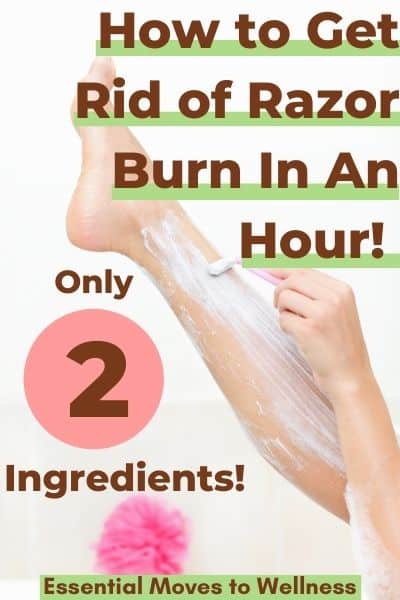
If you prefer natural solutions for soothing razor burn, there are several home remedies that can provide relief and promote healing. These remedies are often readily available and easy to use:
1. Aloe Vera
Aloe vera is a well-known natural remedy for soothing skin irritations. Apply pure aloe vera gel directly to the razor-burned area. It has anti-inflammatory properties that can reduce redness and calm the skin.
2. Coconut Oil
Coconut oil is an excellent moisturizer and has anti-inflammatory properties. Gently massage a small amount of coconut oil onto the affected skin to keep it hydrated and alleviate itching.
3. Tea Tree Oil
Tea tree oil has antiseptic properties that can help prevent infection in razor burn. Dilute a few drops of tea tree oil in a carrier oil (like coconut or olive oil) and apply it to the affected area.
4. Oatmeal Bath
Taking an oatmeal bath can soothe irritated skin. Grind oats into a fine powder and mix it with warm bathwater. Soak in the bath for 15-20 minutes to relieve itching and redness.
5. Cucumber Slices
Cucumber slices have a cooling effect on the skin. Place chilled cucumber slices on the razor-burned area for a few minutes to reduce inflammation and discomfort.
6. Witch Hazel
Witch hazel is a natural astringent that can help soothe razor burn. Dab a cotton ball soaked in witch hazel onto the affected skin to reduce redness and inflammation.
7. Green Tea
Brew a cup of green tea and allow it to cool. Use a cotton ball to apply the tea to the affected area. Green tea contains antioxidants and anti-inflammatory properties that can help soothe the skin.
8. Baking Soda Paste
Create a paste by mixing baking soda with water. Apply the paste to the razor-burned area, leave it on for a few minutes, and then rinse it off. Baking soda can help exfoliate the skin and reduce irritation.
9. Honey
Honey has natural antibacterial properties and can help with wound healing. Apply a thin layer of honey to the razor burn and let it sit for 10-15 minutes before rinsing it off.
| Home Remedies for Razor Burn |
|---|
| Apply aloe vera gel to reduce redness and calm the skin. |
| Moisturize with coconut oil to keep the skin hydrated. |
| Use diluted tea tree oil as an antiseptic. |
| Treat skin with an oatmeal bath to relieve itching. |
| Apply cucumber slices for a cooling effect. |
| Dab witch hazel to reduce redness and inflammation. |
| Use green tea as an antioxidant-rich skin soother. |
| Create a baking soda paste for gentle exfoliation. |
| Apply honey for its antibacterial and wound-healing properties. |
These home remedies offer natural alternatives for treating razor burn and can be especially helpful for those with sensitive skin. Remember to do a patch test if you have any allergies or sensitivities to these ingredients. If your razor burn persists or worsens, consult a healthcare professional for further guidance.
Products for Razor Burn Relief
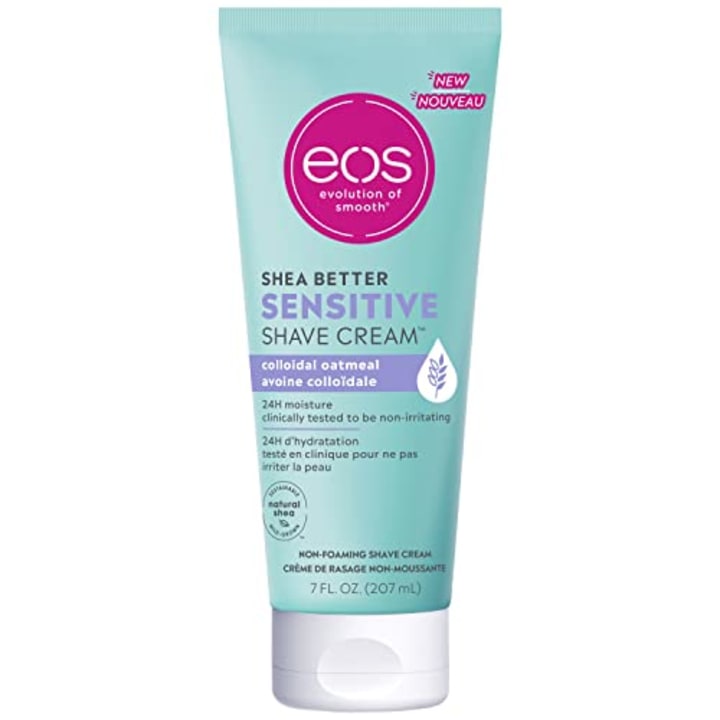
Several commercial products are specifically designed to provide relief from razor burn and skin irritation. These products often contain soothing and healing ingredients to help calm the skin after shaving. Here are some recommended products that can effectively alleviate razor burn:
1. Aftershave Lotions
Aftershave lotions are specially formulated to soothe and moisturize the skin after shaving. Look for alcohol-free options, as alcohol can be drying and may exacerbate razor burn. Many aftershave lotions contain ingredients like aloe vera, chamomile, and witch hazel to calm the skin.
2. Razor Burn Relief Sprays
Razor burn relief sprays are convenient and easy to apply. They typically contain a combination of moisturizers and anti-inflammatory ingredients to provide quick relief from irritation. These sprays are suitable for both men and women and can be used on various areas of the body.
3. Moisturizing Creams
Moisturizing creams enriched with soothing ingredients like shea butter, cocoa butter, and vitamins can help restore hydration to the skin and reduce redness. These creams are great for preventing dryness and discomfort associated with razor burn.
4. Razor Bump Treatment Gels
Razor bump treatment gels are specifically designed to target ingrown hairs and razor bumps, which can often accompany razor burn. They contain exfoliating and anti-inflammatory ingredients to help release trapped hairs and reduce inflammation.
5. Pre-Shave Oils
Pre-shave oils are applied before shaving to create a protective barrier between the razor blade and your skin. They help reduce friction, allowing for a smoother shave and minimizing the risk of razor burn. Look for pre-shave oils with natural ingredients like jojoba oil or almond oil.
6. Soothing Balms
Soothing balms are similar to moisturizing creams but are often thicker in texture. They are designed to provide intense hydration and relief to irritated skin. Some soothing balms contain menthol for a cooling effect.
7. Hydrocortisone Cream
If you have particularly severe razor burn with significant inflammation, you may consider using an over-the-counter hydrocortisone cream. These creams contain a mild steroid that can help reduce redness and swelling. However, use them sparingly and follow the instructions carefully.
| Products for Razor Burn Relief |
|---|
| Alcohol-free aftershave lotions with soothing ingredients. |
| Razor burn relief sprays for quick and easy application. |
| Moisturizing creams enriched with shea or cocoa butter. |
| Razor bump treatment gels for ingrown hair relief. |
| Pre-shave oils to reduce friction during shaving. |
| Soothing balms for intense hydration and relief. |
| Over-the-counter hydrocortisone cream for severe inflammation. |
When choosing a product for razor burn relief, consider your skin type and any specific concerns you have, such as ingrown hairs. Always follow the manufacturer’s instructions for application and discontinue use if you experience any adverse reactions. These products can be valuable additions to your shaving routine, helping you achieve smoother, more comfortable skin.
Best foods for healthy skin: pic.twitter.com/mOmCio7dAb
— Your Skin Friend | Skin Care (@YourSkinCareBot) September 17, 2023
FAQ
Q1: What is razor burn, and why does it happen?
Razor burn is a skin irritation that occurs after shaving. It happens due to friction and irritation from the shaving process, which can lead to redness, itching, and discomfort.
Q2: How can I prevent razor burn?
To prevent razor burn, make sure to use a sharp razor, prep your skin with warm water and shaving cream, shave in the direction of hair growth, and avoid pressing too hard. You can find more tips in the “Preventing Razor Burn” section of this guide.
Q3: What should I do if I already have razor burn?
If you have razor burn, you can apply cool compresses, moisturize your skin, use over-the-counter products, and avoid shaving the affected area until it heals. Detailed steps can be found in the “Treating Razor Burn” and “Home Remedies for Razor Burn” sections.
Q4: Are there any natural remedies for razor burn?
Yes, there are several natural remedies you can try, including aloe vera, coconut oil, tea tree oil, oatmeal baths, cucumber slices, witch hazel, green tea, baking soda paste, and honey. You can find more details in the “Home Remedies for Razor Burn” section.
Q5: What products can I use to relieve razor burn?
You can use products like aftershave lotions, razor burn relief sprays, moisturizing creams, razor bump treatment gels, pre-shave oils, soothing balms, and hydrocortisone cream for severe cases. More information can be found in the “Products for Razor Burn Relief” section.
Q6: How long does it take for razor burn to heal?
Razor burn typically heals on its own within a few days to a week. The healing time may vary depending on the severity of the razor burn and how well you care for the affected area.
Q7: Can razor burn lead to infection?
While razor burn itself is not an infection, it can create openings in the skin that might be susceptible to infection if not properly cared for. It’s essential to keep the area clean and follow proper post-shave care to minimize the risk of infection.
Q8: Are there any specific shaving techniques for preventing razor burn on the bikini area?
Yes, for the bikini area, it’s crucial to use a sharp razor, shave in the direction of hair growth, and avoid tight clothing immediately after shaving. You can find more tips in the “Preventing Razor Burn” section and adapt them for the bikini area.
Q9: When should I consult a healthcare professional about razor burn?
If your razor burn is severe, leads to infection, or does not improve with home remedies or over-the-counter products, it’s advisable to consult a healthcare professional for further evaluation and treatment.
Remember that everyone’s skin is different, so what works best for one person may vary for another. Experiment with different prevention methods, remedies, and products to find the right solution for your skin’s unique needs.
Conclusion
Congratulations! You’ve reached the end of our comprehensive guide on how to get rid of razor burn. We’ve covered a wide range of topics, from understanding what razor burn is to preventing it, treating it, and using home remedies and products for relief. Here’s a quick recap of the key takeaways:
- Razor burn is a common skin irritation caused by friction and irritation during shaving.
- Preventing razor burn involves using a sharp razor, proper skin preparation, and following the right shaving techniques.
- If you do experience razor burn, there are various treatment options, including home remedies and commercial products, to alleviate discomfort.
- Natural remedies like aloe vera, coconut oil, and tea tree oil can be effective for soothing razor burn.
- Commercial products like aftershave lotions, relief sprays, and moisturizing creams are designed to provide relief and promote healing.
- Consistency in good shaving practices and post-shave care is key to preventing future occurrences of razor burn.
Remember that everyone’s skin is unique, so it may take some trial and error to find the best approach for your skin type. Whether you prefer natural remedies or commercial products, the goal is the same: achieving a smooth, irritation-free shave.
By following the tips and recommendations outlined in this guide, you can say goodbye to the discomfort of razor burn and hello to a more enjoyable shaving experience. Keep your skin healthy, hydrated, and well-cared for, and happy shaving!
If you have any further questions or concerns, don’t hesitate to reach out for assistance. Your skin deserves the best care, and with the right knowledge and practices, you can achieve just that.

